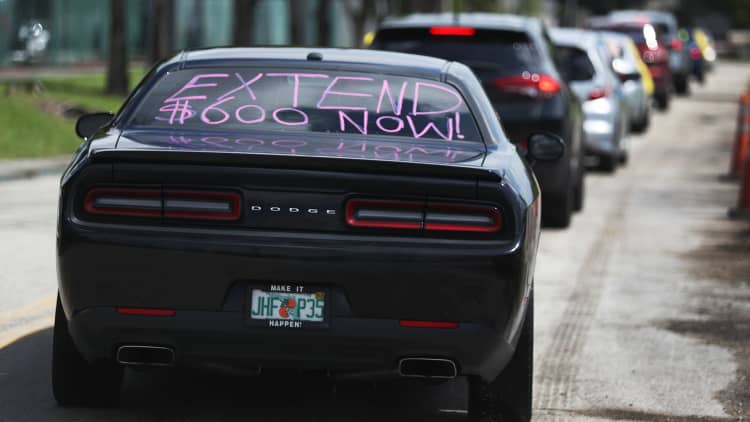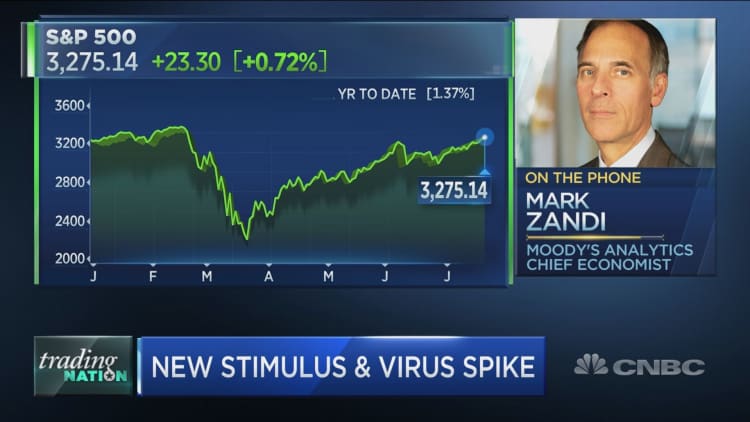The jobs recovery has slowed and, in some cases, reversed as coronavirus cases have surged in sunbelt states where case numbers are climbing and governors have reinstated economic restrictions.
Data from Homebase, a scheduling firm whose daily updates on hourly workers have been closely watched by economists and Wall Street traders during the crisis, shows that some states had fewer employees reporting to work last week than in early June.
"Areas that have seen a spike in coronavirus cases are seeing declines in business activities, although the declines are not as steep as during the first wave of cases," the firm said in a report.
CNBC looked at the trailing seven-day average of employees working from July 19 compared with June 14, which captured much of the time represented the official June jobs report from the Labor Department. The data showed that six states, including Florida, Arizona and Texas, saw the number of employees going to work decline by at least 5% over that period.
Those three states have seen some of the biggest increases in coronavirus cases since they began to reopen their economies. California, which has also seen a surge in cases, has seen employment stay roughly flat over the past five weeks, according to Homebase.

The United States has had more than 3.8 million confirmed cases of the virus and over 140,000 deaths, according to Johns Hopkins University.
The stalled recovery has come despite the labor market still being well-below where it was before the pandemic. Nationally, employees going to work at small and medium-sized businesses was down more than 23% compared with its pre-crisis levels for the seven-day period ending July 19, according to Homebase.
The Homebase data measures employment at certain small- and medium-sized businesses and is not representative of the entire economy, giving a heavier weight toward the service sector. Researchers at the St. Louis Branch of the Federal Reserve identified the data as showing promise of being predictive of the overall labor market.
The small business data also mirrors information from the weekly jobless claims data, which has shown more than a million initial claims every week since the crisis began.
"The vast majority of the pickup in both initial and continuing claims came from recent covid hotspot states, such as Florida (+62k initial / +308k continuing), Georgia (+31k / +166k), and California (+23k / +216k), demonstrating that the recent leveling off we are seeing in some of the high frequency data on mobility, small business activity and restaurant seatings in response to the virus flare-ups are beginning to impact the labor market," Deutsche Bank said in a note.
If a significant slowdown in the labor market recovery is shown in the official monthly data for July and August, that could be a blow to the optimism on Wall Street about the recovery, Deutsche Bank said.
"While most forecasters likely anticipate the pace of labor improvement to slow somewhat from the heady progress in May and June, a more-severe slowing or even a reversal of recent labor gains could materially impact second half growth estimates," the bank said.
The apparent slowdown of the jobs recovery comes as Congress begins negotiations on another round of stimulus, though House Minority Leader Kevin McCarthy told CNBC on Tuesday that he didn't expect a new bill to be passed until early August.
WATCH: Mark Zandi says new stimulus must be at least $1.5 trillion



